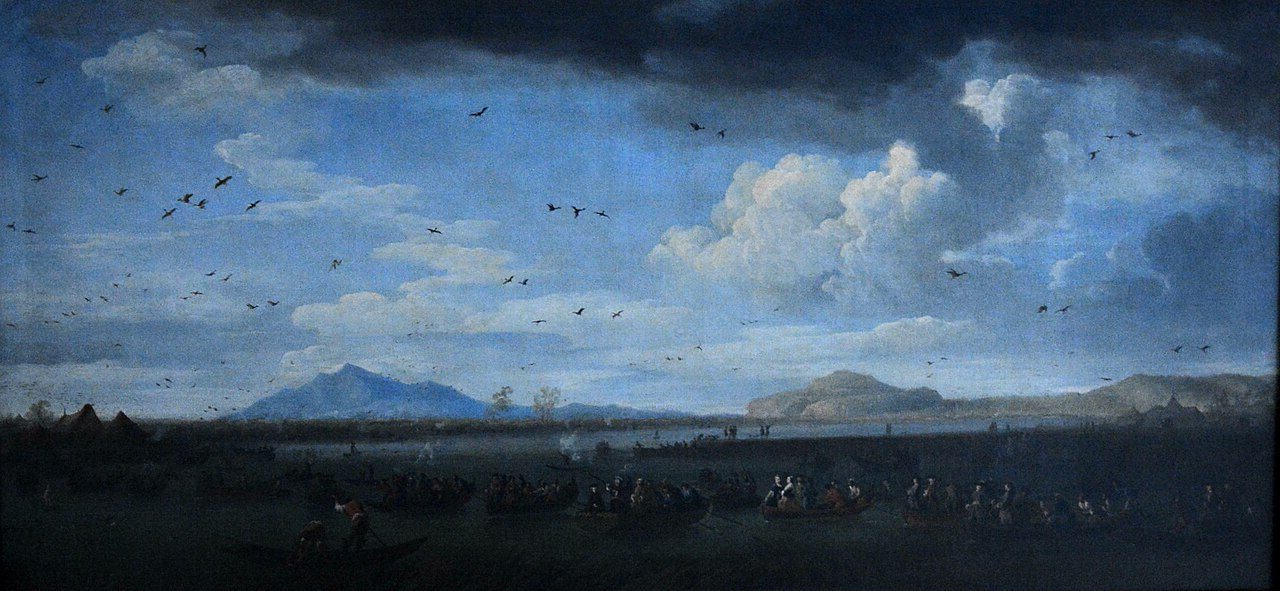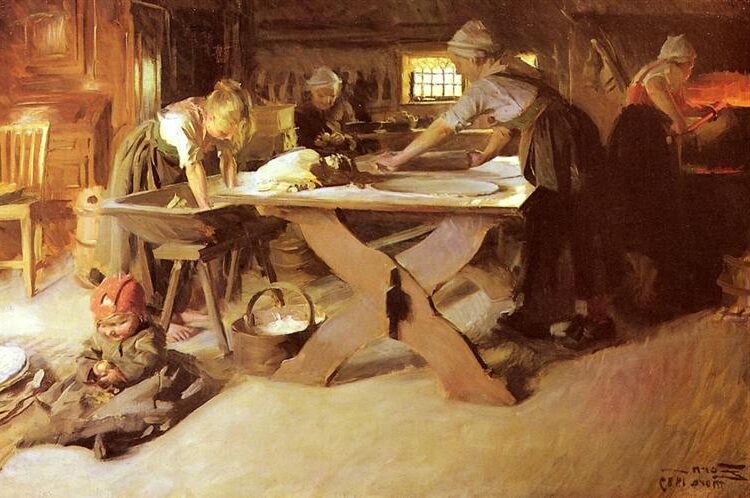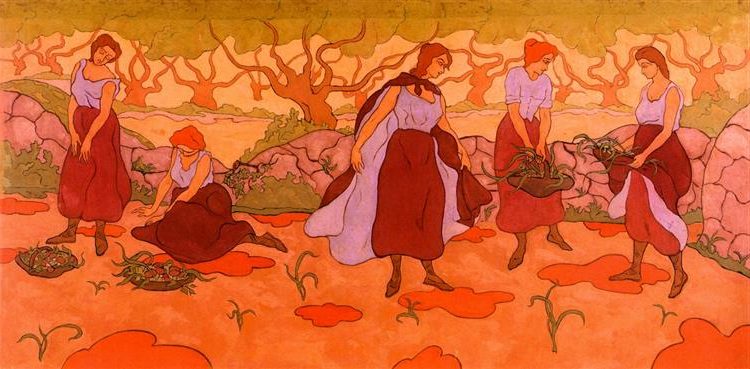Claude Joseph Vernet: Painter of Dramatic Seascapes in 18th Century France
Born: 14 August 1714, Avignon, France
Death: 3 December 1789, Paris, France
Art Movement: Realism, Romanticism
Nationality: French
Influenced By: Claude Lorrain, Salvator Rosa, and Giovanni Paolo Panini
Teachers: Philippe Sauvan and Antoine Vernet (His Father)
Claude Joseph Vernet: Painter of Dramatic Seascapes in 18th Century France
Life and Career of Claude Joseph Vernet
Claude Joseph Vernet was a famous French painter known for his landscapes and seascapes. He lived from 1714 to 1789 and had a long, successful career that spanned several decades.
Early Years in Avignon
Claude Joseph Vernet was born on August 14, 1714, in Avignon, France. His father, Antoine Vernet, was a skilled coach painter. Claude started painting at age 14, working with his father. But he wanted to do more than paint coaches.
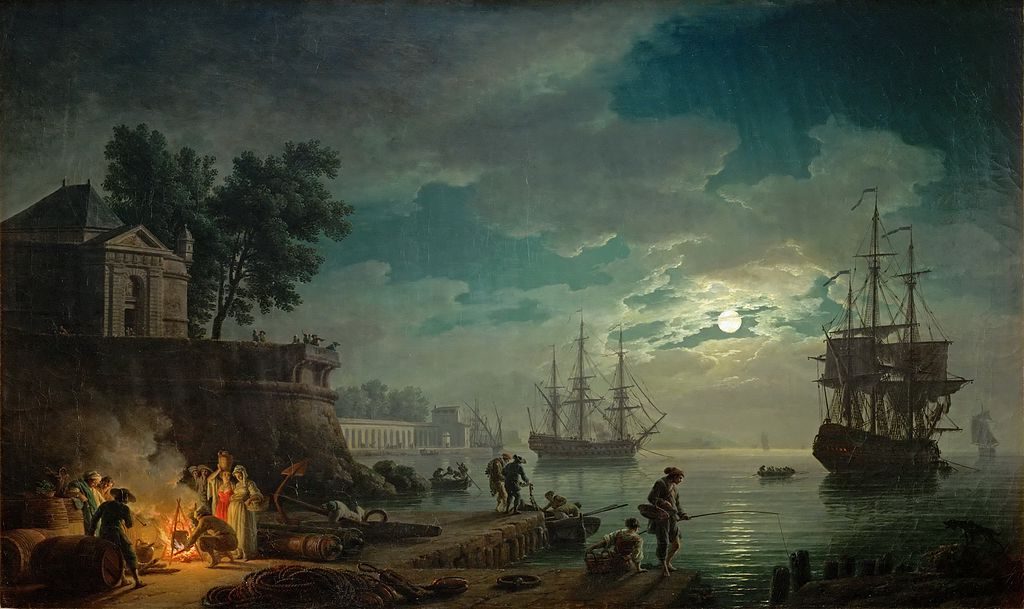
Seaport by Moonlight, (1771) by Claude Joseph Vernet
At 20, Vernet decided to leave Avignon. Before that, he studied with Philippe Sauvan, a top painter in the city. Sauvan taught Vernet how to paint landscapes and people.
Development in Rome
In 1734, Vernet moved to Rome. This was a big step in his career. He stayed there for almost 20 years.
In Rome, Vernet learned to paint seascapes and storms at sea. He looked up to Claude Lorrain, a famous landscape painter. He tried to copy Lorrain’s style. Vernet also painted real places he saw in Italy. His work became very popular with rich travelers.
Acclaim in France and The Ports of France Series
Vernet went back to France in 1753. He joined the Royal Academy of Painting and Sculpture. This was a big honor for artists at the time.
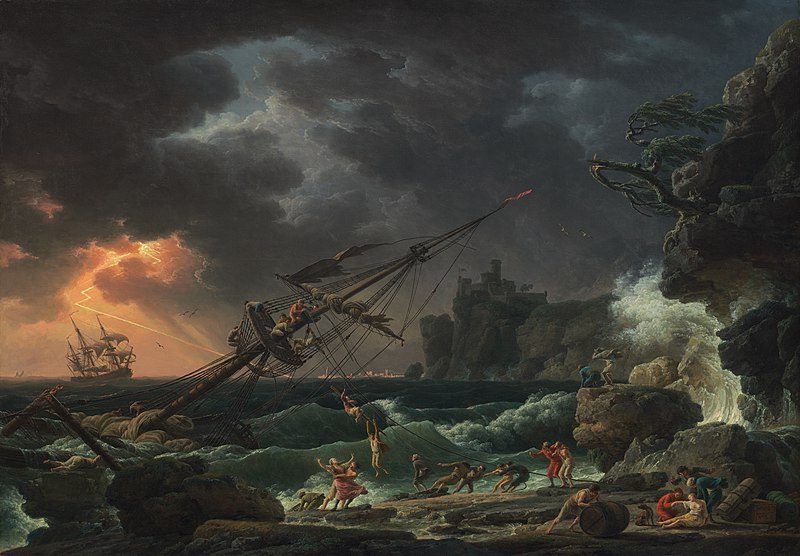
The Shipwreck (1772) by Claude Joseph Vernet
In 1754, King Louis XV gave Vernet a special job. He was to paint pictures of all the major ports in France. This project took 11 years. Vernet made 15 large paintings of different ports. These paintings showed daily life in 18th century France. They are still famous today.
Artistic Legacy and Family
Vernet kept painting until he died in 1789. He was known for his skill at painting light and weather in his scenes. Many people bought his paintings.
Vernet came from an artistic family. His son, Antoine Charles Horace Vernet, also became a painter. His grandson, Horace Vernet, was a famous battle painter.
Vernet’s work influenced other artists. He helped make landscape painting more popular in France. Today, his paintings are in many top museums around the world.
Artistic Style and Influences
Claude Joseph Vernet was known for his mastery of atmospheric effects and ability to capture the drama of nature. He blended classical landscape traditions with a keen eye for natural phenomena.

Morning (1760) by Claude Joseph Vernet
Influential Figures and Precursors
Vernet’s style was shaped by several key artists. Claude Lorrain’s idealized landscapes influenced Vernet’s composition and use of light. Salvator Rosa inspired Vernet’s dramatic depictions of storms and shipwrecks. Giovanni Paolo Panini’s architectural views informed Vernet’s painting of seaports.
Vernet studied these masters during his time in Rome. He absorbed their techniques for creating depth and atmosphere. But he developed his own unique approach to landscape painting.
Depiction of Natural Phenomena
Vernet excelled at portraying weather and light effects. He was especially skilled at painting storms, calms, and moonlit scenes. His storm paintings captured the power and chaos of nature.
Vernet paid close attention to cloud formations, waves, and lighting. He used a range of techniques to create realistic atmospheric effects:
- Layered glazes for subtle color shifts
- Thick impasto for dramatic waves
- Fine brushwork for misty effects
His ability to paint convincing skies and water earned him fame across Europe.
Interplay of the Human Figure within Landscape
Vernet often included small human figures in his landscapes. These figures served several purposes:

Cain And Abel Bringing Their Sacrifices
- Provided a sense of scale
- Added narrative interest
- Showed human interaction with nature
He placed fishermen, travelers, and sailors in his scenes. The figures were carefully posed to draw the viewer’s eye through the composition.
Vernet’s backgrounds showcased nature’s grandeur. But his figures reminded viewers of humanity’s place within that world. This balance of natural beauty and human activity became a hallmark of his style.
Vernet’s Influence and Reception
Claude Joseph Vernet’s paintings left a lasting mark on art history. His work shaped marine painting and influenced many artists who came after him.

View of Dieppe, 1750 by Claude-Joseph Vernet
Impact on the Grand Tour and English Aristocracy
Vernet’s scenes of Italian ports became must-see attractions for English aristocrats on the Grand Tour. His paintings captured the beauty of places like Naples and Rome. Many wealthy travelers bought Vernet’s works as souvenirs.
The artist’s popularity led to commissions from English nobles. They wanted Vernet to paint views of their estates. His style influenced how the English saw and painted landscapes.
Collections and Notable Pieces
Major museums now hold Vernet’s paintings. The Louvre in Paris has a large collection. The National Gallery in London and the Prado in Madrid also display his work.
Some of Vernet’s famous pieces include:
- “Four Times of the Day” (1772)
- “A Beached Whale”
- Scenes of shipwrecks and storms
The Musée National de la Marine in Paris focuses on his seascapes. King Louis XV bought many of Vernet’s paintings for the royal collection.
Recognition by and Influence on Contemporaries
Other artists praised Vernet’s skill. His work was copied and spread through prints. Engravers like Le Bas, Basan, and Flipart made copies of his paintings.

The Night (1757) by Claude-Joseph Vernet
Vernet’s style shaped how later artists painted the sea. His dramatic scenes of shipwrecks inspired Romantic painters. His son Carle Vernet became a well-known painter too.
The National Gallery of Art calls Vernet one of the top landscape and marine painters of his time. His mix of real and imagined scenes set a new standard for seascape painting.
Frequently Asked Questions
Claude Joseph Vernet was a renowned French painter in the 18th century. His works and influence continue to spark interest among art enthusiasts today.
What are the most famous works of Claude Joseph Vernet?
Some of Vernet’s most famous paintings include “The Shipwreck” (1772), “Moonlight” (1772), and “A Landscape at Sunset” (1773). These works showcase his skill in capturing seascapes and landscapes.
“Mediterranean Harbor At Sunset” (1752) is another well-known piece that displays Vernet’s talent for depicting light and atmosphere in coastal scenes.
How did Claude Joseph Vernet influence the art world during his time?
Vernet became a leading French landscape painter in the late 18th century. His topographical paintings and serene landscapes gained him great fame and recognition.
He excelled in painting tempests and moonlight scenes, which set him apart from other artists of his time. Vernet’s work inspired many other painters to focus on landscape and seascape subjects.
Can you describe the style and characteristics of Claude Joseph Vernet’s seascapes?
Vernet’s seascapes are known for their careful observation and realistic depiction of light and air. He captured the subtle interplay of light on water with remarkable skill.
His paintings often feature dramatic skies, detailed ships, and human figures that add scale and interest to the scenes. Vernet’s work balanced realism with a sense of romanticism and drama.
What was the historical and cultural significance of Claude Joseph Vernet’s paintings in the 18th century?
Vernet’s paintings were highly valued by European nobility and collectors. His works were commissioned by important figures like Stanislas Augustus, King of Poland, and Lord Clive of India.
His seascapes and landscapes provided viewers with a window into different parts of the world, satisfying the 18th-century fascination with travel and exotic locales.
How has Claude Joseph Vernet’s legacy been preserved in modern art institutions?
Many of Vernet’s paintings are now housed in major museums around the world. The National Gallery in London holds several of his works, including “A Landscape at Sunset.”
Art historians continue to study and write about Vernet’s techniques and his impact on landscape painting. His works are often featured in exhibitions on 18th-century European art.
Who were the contemporaries and influencers of Claude Joseph Vernet in the art community?
Hubert Robert was another leading French landscape painter during Vernet’s time. The two artists were often compared and admired for their contributions to the genre.
Vernet’s father, Antoine Vernet, and the history painter Philippe Sauvan in Avignon trained him. These early influences helped shape his artistic style and career path.

